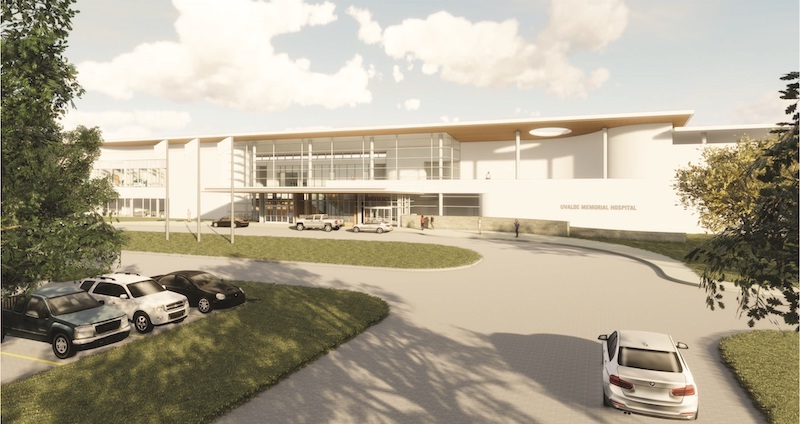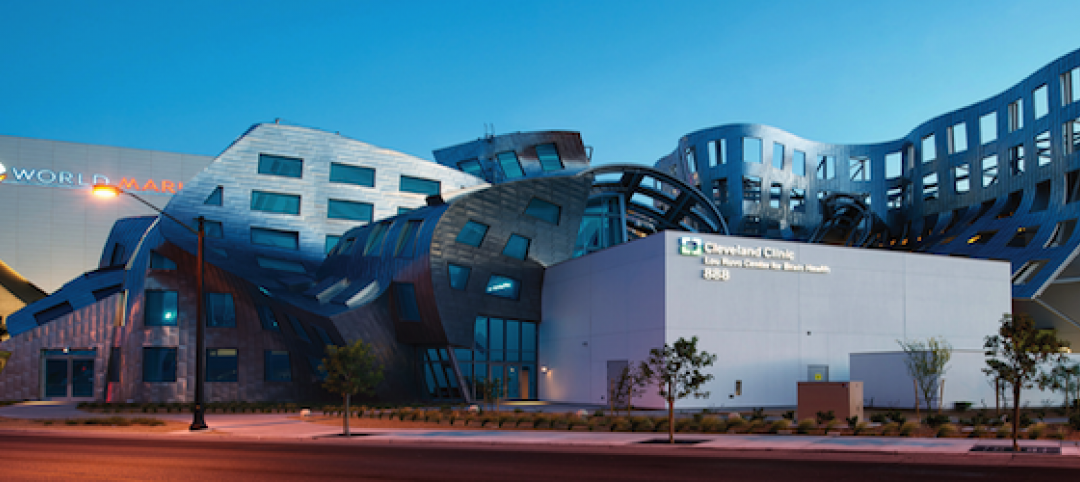Last August 1, Uvalde (Texas) Memorial Hospital broke ground on a 170,000-sf, $83.5 million replacement hospital that is following a building model specifically for rural and underfunded communities, devised by this project’s general contractor Hoar Construction.
Over the past decade, Hoar’s Texas division has built or renovated more than 1.3 million sf of healthcare facilities using a preconstruction formula that helps rural healthcare providers overcome budget barriers and win over community and political support for funding on capital improvement projects.
“Rural healthcare is in crisis right now,” observes Coker Barton, Hoar Construction’s Senior Vice President of Healthcare. “We’ve seen 126 rural hospitals across the United States close since 2010. Rural healthcare is unique in that it really does take a village to get a project across the finish line, or even started for that matter. After completing our first project, we saw an opportunity to really dig in and help these healthcare providers early in the process so they could make the most of their budgets and provide that much-needed care to their local communities.”
Some recent examples where the Hoar applied its roadmap include:
•Faith Community Hospital in Jacksboro, Texas, a $28 million facility that, when it opened in September 2015, replaced a 60-year-old building that nearly closed due to bad management and unsafe conditions.
Through value engineering Hoar found $100,000 in savings that allowed this project to move forward. The hospital also did a needs assessment before going to the voters for funding, which they had been rejected previously. (To build grassroots support for a new hospital, Faith, spearheaded by its CEO Frank Beaman, boosted community engagement and education, and hired additional personnel to follow-up with patients.)
This is the first rural/sole provider hospital in the state with a geothermal water heat pump, which helps reduce operating costs.
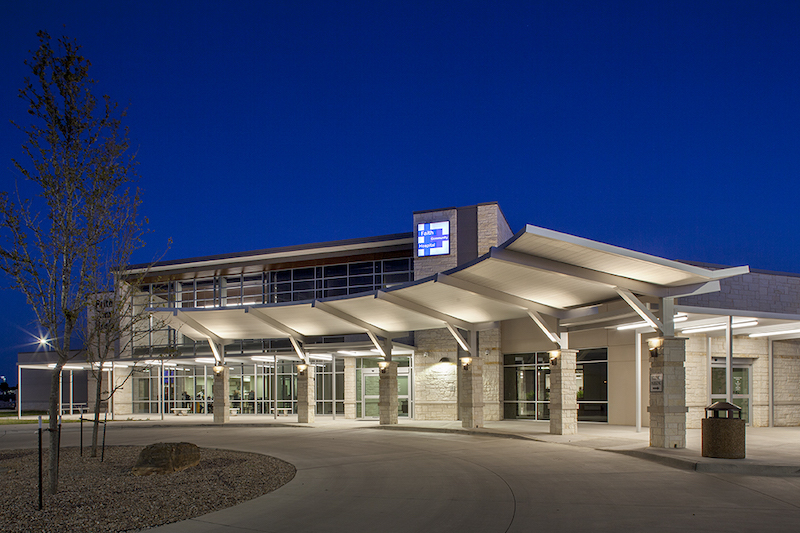
Faith Community Hospital had to overcome community opposition to its cost.
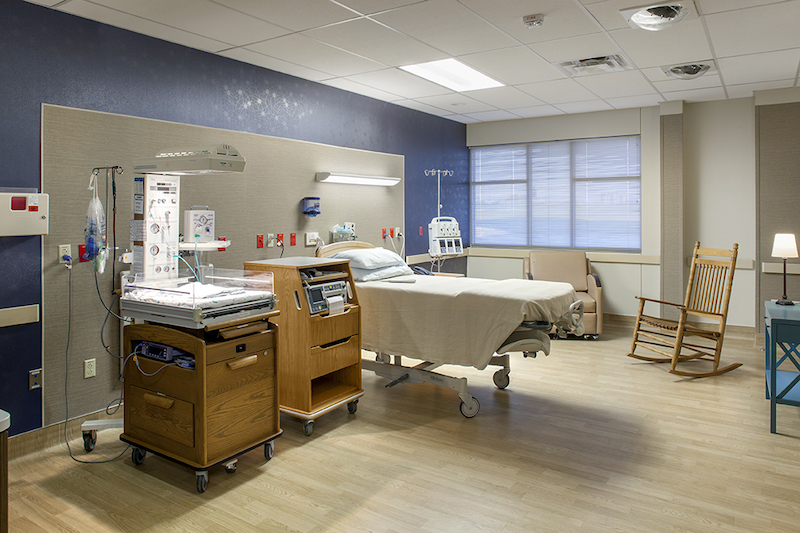
•Mountain Lakes Medical Center, a 67,000-sf critical access hospital in Clayton, Ga., whose construction was $2 million over budget when Hoar came on board. Hoar saved this project nearly $400,000 by switching to exterior insulation and finish system (EIFS) panels, from more expensive exterior cladding made by Trespa International. Hoar also streamlined trade partners’ work to ensure faster delivery of the project, which was completed in October 2017.
Uvalde, Texas, population 16,000, is a 7.6-square-mile town about 80 miles west of San Antonio. Its current hospital—which will be torn down once the new one is ready for occupancy in September 2021—was built in 1972. The U.S. Department of Agriculture’s rural development office is financing the new hospital’s construction through $58.5 million in direct funding and $16.5 million in guaranteed loans. The hospital intends to issue 40-year bonds to raise $75 million.
Finding potential financing vehicles is part of the roadmap Hoar Construction has devised for community and rural hospitals that are often at “a natural disadvantage for borrowing money.” Those vehicles can include bond financing, the Federal Housing Administration’s Section 242 Mortgage Insurance program, and USDA’s Communities Facilities loan program.
Hoar has mapped out how a project’s preplanning, preconstruction, and construction stages should move forward. For example, it says that hospitals need to “consider your ideal facility 50 years from now, cost implications, possible interruptions, and long-term growth.” It states that operational planning is “key” to completing a successful project. “Consider the relocation of equipment and transfer of staff and IT infrastructure to ensure a seamless move.”
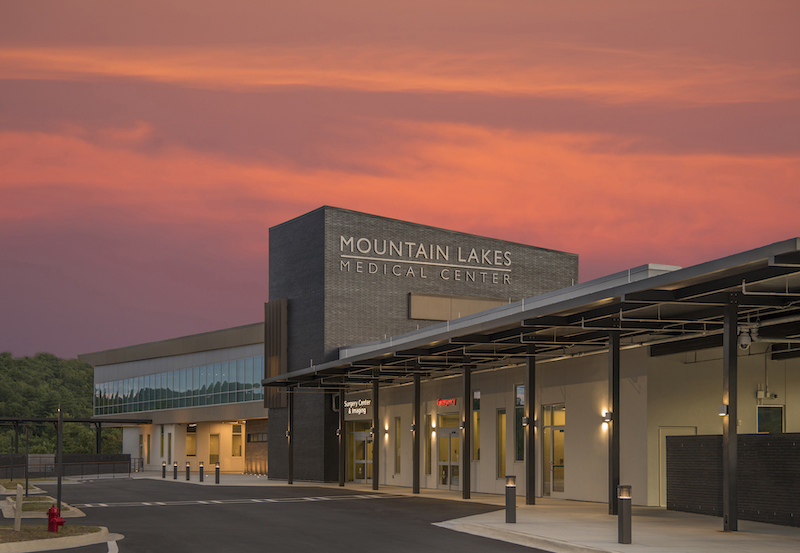
Mountain Lakes Medical Center connects its patients with the outdoors.
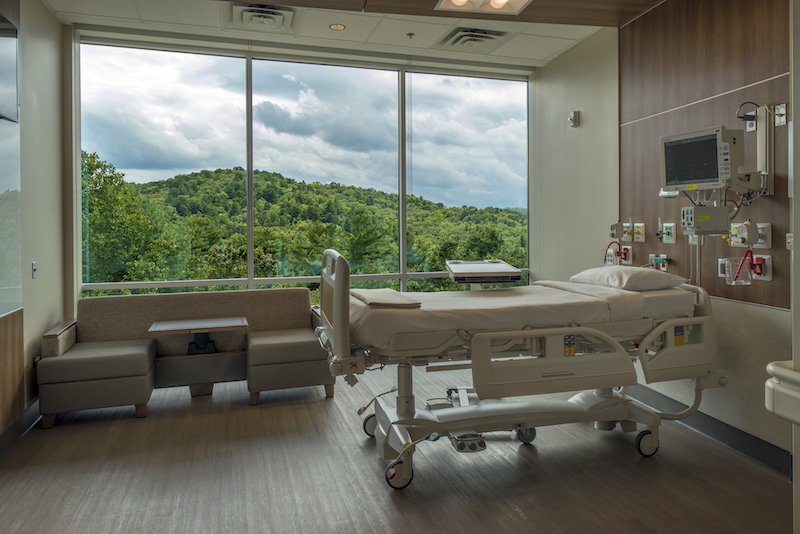
Perkins and Will designed Uvalde Memorial. Hoar’s model takes into account programming and project definition, architectural design and engineering, and the development of construction contract documents. The success of this process, it says, rests on thorough and timely input from hospital personnel, and early constructability input related to the use of cost-effective building systems that balance initial cost and long-range operational expenses.
“The roadmap really champions the idea of a collaborative design review, which include great partners like Perkins and Will and even our trade partners to come up with a workable plan and meet the challenge of how we’re going to build a hospital or other healthcare facility,” says Hoar’s Barton. “This way, we can price out every process, material, and design element as the architect draws it. By having daily or weekly design meetings, we can understand what they’re drawing and what our owner is seeking in the design. If something is over budget or there’s an issue that could negatively impact the schedule, we can identify it in real time and work with the design team to find a better option.
“Essentially, we’re making a series of small corrections during the design phase, instead of wholesale rework during construction. This also helps determine the best workflow and maintain the construction schedule,” Barton says.
Hoar has found that the CM-at-Risk delivery method works best for these kinds of projects “because we can get involved early and be part of the team, which helps with the budget and schedule,” explains Barton. Understanding project expectations early allows the team to eliminate waste and produce more accurate documents and cost estimates. Hoar’s roadmap focuses specifically on MEP systems and specifications, “which are the largest driver of construction costs and can create operational issues when MEP systems are not sized appropriate[ly] for your facility.”
The new hospital in Uvalde will include 132,870 sf of institutional space, 31,872 sf of administrative space, and a 11,500-sf central utility plant. The replacement hospital will house an emergency department, physical and occupational therapy department, a 25-bed medical surgical inpatient unit, and 16 outpatient beds.
Related Stories
| Jan 21, 2011
Research center built for interdisciplinary cooperation
The Jan and Dan Duncan Neurological Research Institute at Texas Children’s Hospital, in Houston, the first basic research institute for childhood neurological diseases, is a 13-story twisting tower in the center of the hospital campus.
| Jan 19, 2011
Biomedical research center in Texas to foster scientific collaboration
The new Health and Biomedical Sciences Center at the University of Houston will facilitate interaction between scientists in a 167,000-sf, six-story research facility. The center will bring together researchers from many of the school’s departments to collaborate on interdisciplinary projects. The facility also will feature an ambulatory surgery center for the College of Optometry, the first of its kind for an optometry school. Boston-based firms Shepley Bulfinch and Bailey Architects designed the project.
| Jan 19, 2011
New Fort Hood hospital will replace aging medical center
The Army Corps of Engineers selected London-based Balfour Beatty and St. Louis-based McCarthy to provide design-build services for the Fort Hood Replacement Hospital in Texas, a $503 million, 944,000-sf complex partially funded by the American Recovery and Reinvestment Act. The firm plans to use BIM for the project, which will include outpatient clinics, an ambulance garage, a central utility plant, and three parking structures. Texas firms HKS Architects and Wingler & Sharp will participate as design partners. The project seeks LEED Gold.
| Jan 10, 2011
Michael J. Alter, president of The Alter Group: ‘There’s a significant pent-up demand for projects’
Michael J. Alter, president of The Alter Group, a national corporate real estate development firm headquartered in Skokie, Ill., on the growth of urban centers, project financing, and what clients are saying about sustainability.
| Dec 17, 2010
ARRA-funded Navy hospital aims for LEED Gold
The team of Clark/McCarthy, HKS Architects, and Wingler & Sharp are collaborating on the design of a new naval hospital at Camp Pendleton in Southern California. The $451 million project is the largest so far awarded by the U.S. Navy under the American Recovery and Reinvestment Act. The 500,000-sf, 67-bed hospital, to be located on a 70-acre site, will include facilities for emergency and primary care, specialty care clinics, surgery, and intensive care. The Building Team is targeting LEED Gold.
| Dec 17, 2010
Arizona outpatient cancer center to light a ‘lantern of hope’
Construction of the Banner MD Anderson Cancer Center in Gilbert, Ariz., is under way. Located on the Banner Gateway Medical Center campus near Phoenix, the three-story, 131,000-sf outpatient facility will house radiation oncology, outpatient imaging, multi-specialty clinics, infusion therapy, and various support services. Cannon Design incorporated a signature architectural feature called the “lantern of hope” for the $90 million facility.
| Oct 18, 2010
World’s first zero-carbon city on track in Abu Dhabi
Masdar City, the world’s only zero-carbon city, is on track to be built in Abu Dhabi, with completion expected as early as 2020. Foster + Partners developed the $22 billion city’s master plan, with Adrian Smith + Gordon Gill Architecture, Aedas, and Lava Architects designing buildings for the project’s first phase, which is on track to be ready for occupancy by 2015.
| Oct 13, 2010
Prefab Trailblazer
The $137 million, 12-story, 500,000-sf Miami Valley Hospital cardiac center, Dayton, Ohio, is the first major hospital project in the U.S. to have made extensive use of prefabricated components in its design and construction.
| Oct 13, 2010
Hospital tower gets modern makeover
The Wellmont Holston Valley Medical Center in Kingsport, Tenn., expanded its D unit, a project that includes a 243,443-sf addition with a 12-room operating suite, a 36-bed intensive care unit, and an enlarged emergency department.
| Oct 13, 2010
Hospital and clinic join for better patient care
Designed by HGA Architects and Engineers, the two-story Owatonna (Minn.) Hospital, owned by Allina Hospitals and Clinics, connects to a newly expanded clinic owned by Mayo Health System to create a single facility for inpatient and outpatient care.


